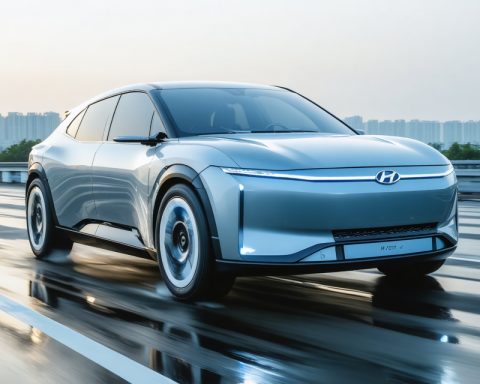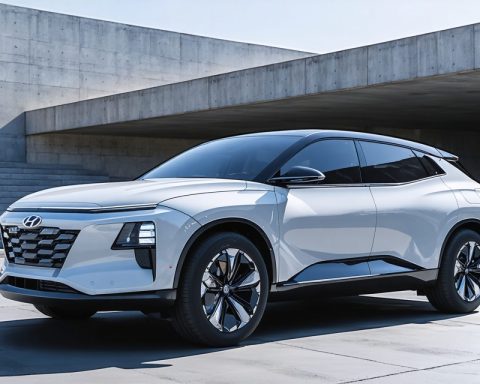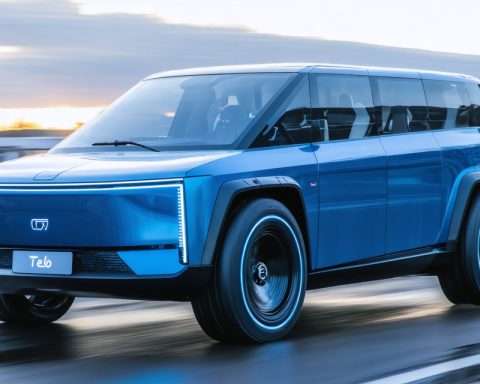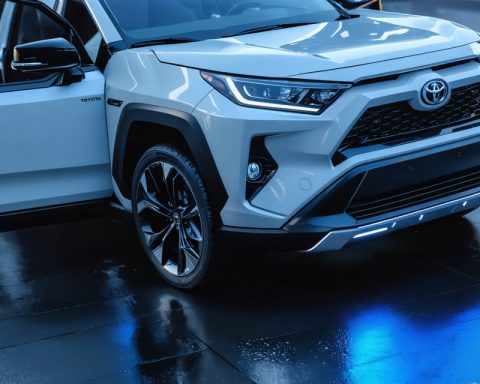- The new 25% tariff on imported vehicles by the Trump administration aims to alter global supply chains and intensifies the ongoing trade war.
- Key countries impacted include South Korea, Japan, Mexico, Canada, and Germany—major players in the US automotive industry.
- The tariff increases costs for both imported and domestically produced vehicles, threatening the US automotive industry’s dependency on efficient supply chains.
- Strategic responses from foreign carmakers include increasing US investments, building manufacturing facilities, and forming partnerships with US companies.
- South Korea is proactively investing in EV battery plants and partnering with US automakers, though challenges remain.
- The UK auto industry, including prominent brands, prepares for potential impacts by considering cost absorption and production shifts.
- ‘Natural hedging’ strategies, such as sourcing more materials domestically, are considered by OEMs like BMW to mitigate tariff effects.
- The global auto industry faces significant challenges, with success depending on adaptability and strategic foresight.
From the bustling ports of South Korea to the manufacturing heartlands in Germany and Japan, a storm brews on the horizon. The Trump administration’s latest move to slap a 25% tariff on imported vehicles is set to upend global supply chains and ignite fresh tensions across international markets. This bold stroke amplifies the simmering trade war, targeting countries with formidable trade surpluses with the US, echoing with familiar threats across the globe.
The repercussions ripple far and wide. Among the most affected are Mexico, Japan, South Korea, Canada, and Germany—nations deeply interwoven into the fabric of the American automotive landscape. Yet, the tremors of change resound most profoundly for South Korea, whose automotive giants like Hyundai and Kia shipped over a million vehicles to the US last year alone.
Beyond mere numbers, the tariff delivers a staggering blow to an industry reliant on speed and efficiency. American manufacturing has long thrived on free-flowing supply chains, especially for essential components sourced cheaply from Mexico and Asia. Heightened tariffs mean increased costs—not only for imported vehicles but also for those manufactured domestically. The irony is not lost when one considers Tesla, the electric vanguard seemingly insulated from this turmoil.
Nonetheless, amid the challenges, there are glimmers of strategic pivots. Foreign carmakers might be nudged to boost their investments in the US, committing to billions in fresh capital to build new manufacturing facilities on American soil. These plans, while promising, require stable policies and a conducive environment to materialize fully.
South Korea, undeterred, has already embarked on such ventures with substantial investments in electric vehicle (EV) battery plants. Partnerships with US titans like Ford and General Motors highlight a proactive approach, yet the complex economics of BEVs and fluctuating market projections threaten to slow down these ambitions.
Across the Atlantic, the United Kingdom watches with a cautious eye. Its auto industry, notably the likes of Jaguar Land Rover and MINI, braces for the blow of Trump’s tariffs. They find themselves navigating potential strategies—absorbing costs, shifting production, or leveraging local CKD kits to stay competitive, all while facing US cultural and regulatory challenges.
In this era of global trade chess, foreign OEMs with American footholds—BMW’s Spartanburg plant being one of them—are considering ‘natural hedging’ strategies. Sourcing and manufacturing more domestically could mitigate the sting of the tariffs. Yet, reconfiguring the finely-tuned symphony of vehicle assembly and supply chains remains a Herculean task.
The global auto industry, poised at a crossroads, is a testament to both the perils and potential of globalization. As nations wield tariffs like swords, each move reverberates through boardrooms and blue-collar workshops alike, underscoring the delicate balance between protectionism and prosperity. The road ahead may be riddled with potholes, but it is clear: adaptability and foresight will be the cornerstones of thriving in this brave new automotive world.
The Hidden Effects of Trump’s Auto Tariffs: What You Need to Know
Overview
The introduction of a 25% tariff on imported vehicles by the Trump administration has triggered a seismic shift in global automotive supply chains, impacting economies worldwide. This article explores the multifaceted consequences, strategic responses, and potential futures for the global auto industry amid this trade war.
Economic Ripple Effects
1. Impact on Global Trade:
– Increased Vehicle Costs: As tariffs inflate prices of imported vehicles, consumers may face higher costs when purchasing cars, impacting demand and sales volume.
– Supply Chain Disruptions: Essential components commonly sourced from Mexico and Asia could face barriers, affecting both imported and domestically-manufactured vehicles.
2. Strategic Manufacturing Adjustments:
– Domestic Investment Incentives: Foreign automakers may increase investments in US-based manufacturing to circumvent tariffs, potentially creating new jobs and stimulating local economies.
3. Industry-Specific Consequences:
– South Korea: Hyundai and Kia, major vehicle exporters to the US, face challenges. Yet, they are exploring investments in the American market, particularly in EV technology.
– United Kingdom: With a strong presence from Jaguar Land Rover and MINI, the UK auto sector could see significant effects, with companies possibly absorbing costs or relocating production.
Strategic Responses and Opportunities
1. Shift Towards Localization:
– Companies like BMW and others are leveraging in-country manufacturing to minimize tariff impacts, employing strategies like ‘natural hedging’ to balance out international operations.
2. Investment in Electric Vehicles:
– South Korea is making strides with significant investments in EV battery plants in collaboration with leading US automakers, such as Ford and General Motors.
Future Trends and Predictions
1. Rise of Electric Vehicles:
– As nations navigate new tariffs, there is potential for accelerated investment in EV infrastructure and innovation, leading to a greener automotive future.
2. Adaptive Global Manufacturing:
– The reconfiguration of global supply chains may prompt advancements in manufacturing efficiency and technology, reducing the industry’s carbon footprint and reliance on global supply webs.
3. Policy Influence:
– Long-term impacts will be shaped by ongoing policy decisions and diplomatic negotiations, requiring stable and predictable economic environments for strategic investments to come to fruition.
Actionable Insights
1. Consumer Strategies:
– Stay informed about international trade policies’ effect on vehicle pricing and explore options like leasing or buying late-model vehicles to bypass inflated costs.
2. Industry Preparation:
– Automakers should focus on agile strategies, diversifying supply chains, and investing in local manufacturing to remain resilient against geopolitical uncertainties.
3. Market Monitoring:
– Keep an eye on emerging trends in the EV sector and eco-friendly technologies that could redefine industry standards and preferences, offering new opportunities.
For more insights on automotive trends, explore the industry updates at Automotive Industry Trends.
Conclusion
The global automobile industry stands at a critical juncture, with protectionist policies influencing their operations. Adaptability, innovation, and strategic foresight will be pivotal in navigating these turbulent times and ensuring long-term prosperity.














